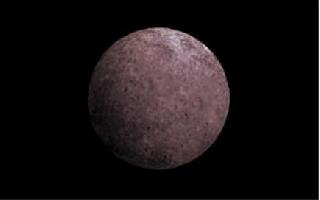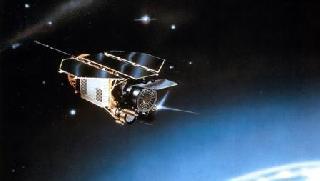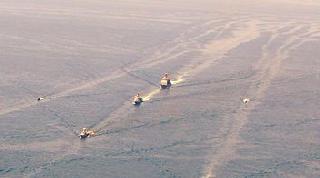
An artist's conception of 2007 OR10. Photo: NASA
WASHINGTON (PTI): Astronomers have discovered a mysterious little dwarf planet which they believe is covered in ice and may sport the wispy remnants of an atmosphere.
The planet, nicknamed "Snow White", lies outside Neptune and is orbiting the sun as part of the Kuiper belt -- the ring of icy bodies that orbit the sun beyond Neptune.
Officially known as 2007 OR10, it is actually red, half of its surface is covered by water ice that probably spewed from ancient cryovolcanoes, researchers said.
It's believed that the dwarf planet's reddish hue likely comes from a thin layer of methane, the last gasps of an atmosphere that has been bleeding off into space for eons.
"You get to see this nice picture of what once was an active little world with water volcanoes and an atmosphere, and it's now just frozen, dead, with an atmosphere that's slowly slipping away," lead scientist Mike Brown of California Institute of Technology was quoted as saying by SPACE.com.
At the time of its discovery in 2007, Brown guessed that Snow White had broken off long ago from another dwarf planet, called Haumea -- a weird, football-shaped body, which is sheathed in water ice. Hence, it's nicknamed Snow White.
However, follow-up studies soon showed that Snow White, which is about half the size of Pluto, is actually quite red like many other Kuiper Belt objects.
So Brown and his team weren't expecting to find a lot of water ice when they used the Magellan Baade Telescope in Chile to take a closer look at Snow White last year.
But, spectral data showed that water ice abounded on Snow White's surface. "That was a big shock. Water ice is not red," Brown said.
The new findings were published in Astrophysical Journal Letters.
Scientists already knew one dwarf planet that's both red and covered with water ice: Quaoar, which Brown and his team discovered in 2002.
Researchers think Quaoar, which is slightly smaller than Snow White, once had an atmosphere composed of volatile compounds such as methane, carbon monoxide and nitrogen. But its gravity wasn't strong enough to hold onto these chemicals, and the icy world began losing its atmosphere to space.
Over time, everything but some methane escaped. And radiation from space has transformed those methane molecules -- which consist of one carbon atom bonded to four hydrogen atoms -- into long hydrocarbon chains, the researchers said.
Those chains look red to our instruments, and they sit atop Quaoar's water-ice surface. Snow White's spectrum looks similar to Quaoar's, suggesting that similar processes occurred on both dwarf planets, they said.
"We're basically looking at the last gasp of Snow White.
For four and a half billion years, Snow White has been sitting out there, slowly losing its atmosphere, and now there's just a little bit left." Brown said.
While Snow White definitely has a lot of water ice on its surface, the evidence for methane is not conclusive, he added.
 Previous Article
Previous Article Next Article
Next Article











The Indian Air Force, in its flight trials evaluation report submitted before the Defence Ministry l..
view articleAn insight into the Medium Multi-Role Combat Aircraft competition...
view articleSky enthusiasts can now spot the International Space Station (ISS) commanded by Indian-American astr..
view article